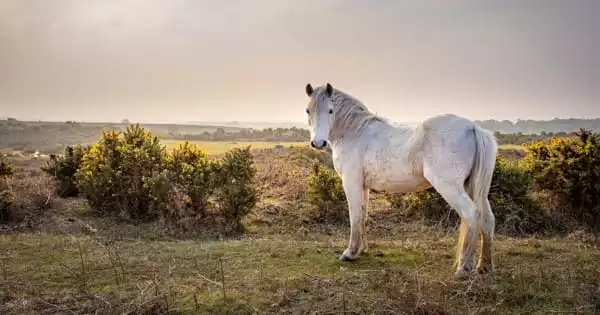According to a new study, medieval warhorses were often depicted as massive and powerful beasts, but in reality, many were no bigger than pony-sized by modern standards. Horses were frequently less than 14.2 hands tall during the period, but size was clearly not everything, as historical records show huge sums were spent on developing and maintaining networks for the breeding, training, and keeping of combat horses.
A group of archaeologists and historians looking for the truth about the Great Horse discovered that they were not always bred for size, but for success in a variety of different functions, such as tournaments and long-distance raiding campaigns.
The researchers examined the largest dataset of English horse bones discovered between AD 300 and 1650 at 171 different archaeological sites. The study, which was published in the International Journal of Osteoarchaeology, found that breeding and training of warhorses were influenced by a combination of biological and cultural factors, as well as behavioral characteristics of the horses themselves, such as temperament.
Size and limb bone robusticity alone are not sufficient to confidently identify warhorses in the archaeological record. Historic records do not specify the specific criteria that defined a warhorse; it is much more likely that different conformations of horses were desirable at different times throughout the medieval period in response to changing battlefield tactics and cultural preferences.
Helene Benkert
In films and popular media, medieval warhorses are frequently depicted as massive mounts on the scale of Shire horses, standing 17 to 18 hands tall. However, evidence suggests that horses of 16 and even 15 hands were extremely rare, even at the height of the royal stud network in the 13th and 14th centuries, and that animals of this size would have been considered enormous by medieval people.
Helene Benkert, a researcher at the University of Exeter, stated: “Size and limb bone robusticity alone are not sufficient to confidently identify warhorses in the archaeological record. Historic records do not specify the specific criteria that defined a warhorse; it is much more likely that different conformations of horses were desirable at different times throughout the medieval period in response to changing battlefield tactics and cultural preferences.”
The tallest Norman horse found was at Trowbridge Castle in Wiltshire, and was estimated to be around 15hh, similar to the size of small modern light riding horses. The first horses of around 16hh appear in the high medieval period (1200-1350 AD), but it is not until the post-medieval period (1500-1650 AD) that the average height of horses becomes significantly larger, eventually approaching the sizes of modern warmblood and draft horses.

According to Professor Alan Outram of the University of Exeter: “Although high medieval destriers were relatively large for the time period, they were clearly much smaller than we would expect for equivalent functions today. Selection and breeding practices in the Royal studs may have emphasized temperament and the appropriate physical characteristics for warfare as much as raw size.”
“The warhorse is central to our understanding of medieval English society and culture as both a symbol of status closely associated with the development of aristocratic identity and as a weapon of war famed for its mobility and shock value, changing the face of battle,” said Professor Oliver Creighton, the project’s Principal Investigator.
When the researchers looked at the robusticity of horse bones — their strength in relation to their size — they discovered that between about 1200 and 1350, horses’ metatarsal bones became noticeably more robust. This could be a result of breeding programs aimed at producing strong horses with the ability to stop abruptly and change direction quickly.
The researchers observed a decline in the robustness of the bones in the early 16th century, which corresponded with a decline in the British horse trade. Finally, the researchers were unable to find a specific marker of warhorses in archaeological contexts. They contend that archaeological remains of warhorses are far more likely to be discovered in former domestic settings than in castles, and that different warhorses were bred for different purposes.
The archaeologists acknowledge a few limitations to their research, including the difficulty in determining whether they are looking at warhorses or equines used for agriculture or other labor. However, because all of the horse remains examined by the team were small, warhorses were most likely pony-sized as well. Following that, the archeologists intend to study medieval horse armor and DNA extracted from bone samples to gain a better understanding of the iconic animals.
















